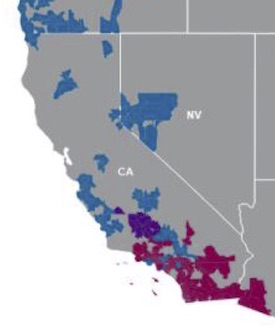
It’s all Charter territory now.
Charter Communications will own Time Warner cable systems in southern California and Bright House systems in the San Joaquin Valley and become the state’s largest cable company, following yesterday’s unanimous approval of the deal by the California Public Utilities Commission.
Commission president Michael Picker – technically, the commissioner responsible for the decision text – made one change to the revised draft prepared by an administrative law judge. He added a three year limit on Charter’s obligation to “comply with all the terms and conditions of the Federal Communications Commission’s Open Internet Order, regardless of the outcome of any legal challenge”. The amendment corrected what appeared to be a drafting error – as originally written, Charter would have to abide by those rules forever and ever, at least in California, regardless of what courts or the FCC might decide in the future.
Enforceability of the decision was a key point of debate. Commissioner Catherine Sandoval suggested modifying the decision to allow a longer list of organisations to monitor compliance and bring action against Charter at the CPUC if commitments aren’t kept. It’s an important point because Charter signed agreements with a number of organisations – including my client, the City of Gonzales – detailing obligations over and above what the CPUC and the FCC imposed. After much discussion between commissioners and staff attorneys, everyone agreed that the draft language allowed ample opportunities for those involved to seek redress, and no changes were made.
The most telling point was made by commissioner Carla Peterman, who managed last year’s acrimonious review of this deal’s failed predecessor, the attempt by Comcast to likewise buy Time Warner and Bright House’s Californian systems and roll in Charter’s systems here. She compared Charter’s willingness to negotiate with Comcast’s nasty smash mouth tactics and refusal to deal with anyone, least of all the CPUC. Okay, I said that, she didn’t. But she did tactfully contrast the two proceedings to Charter’s advantage, and I’ll just write – if not read – between the lines.
With the CPUC’s vote, the regulatory path to closing the deal is clear. Then, the work begins.
